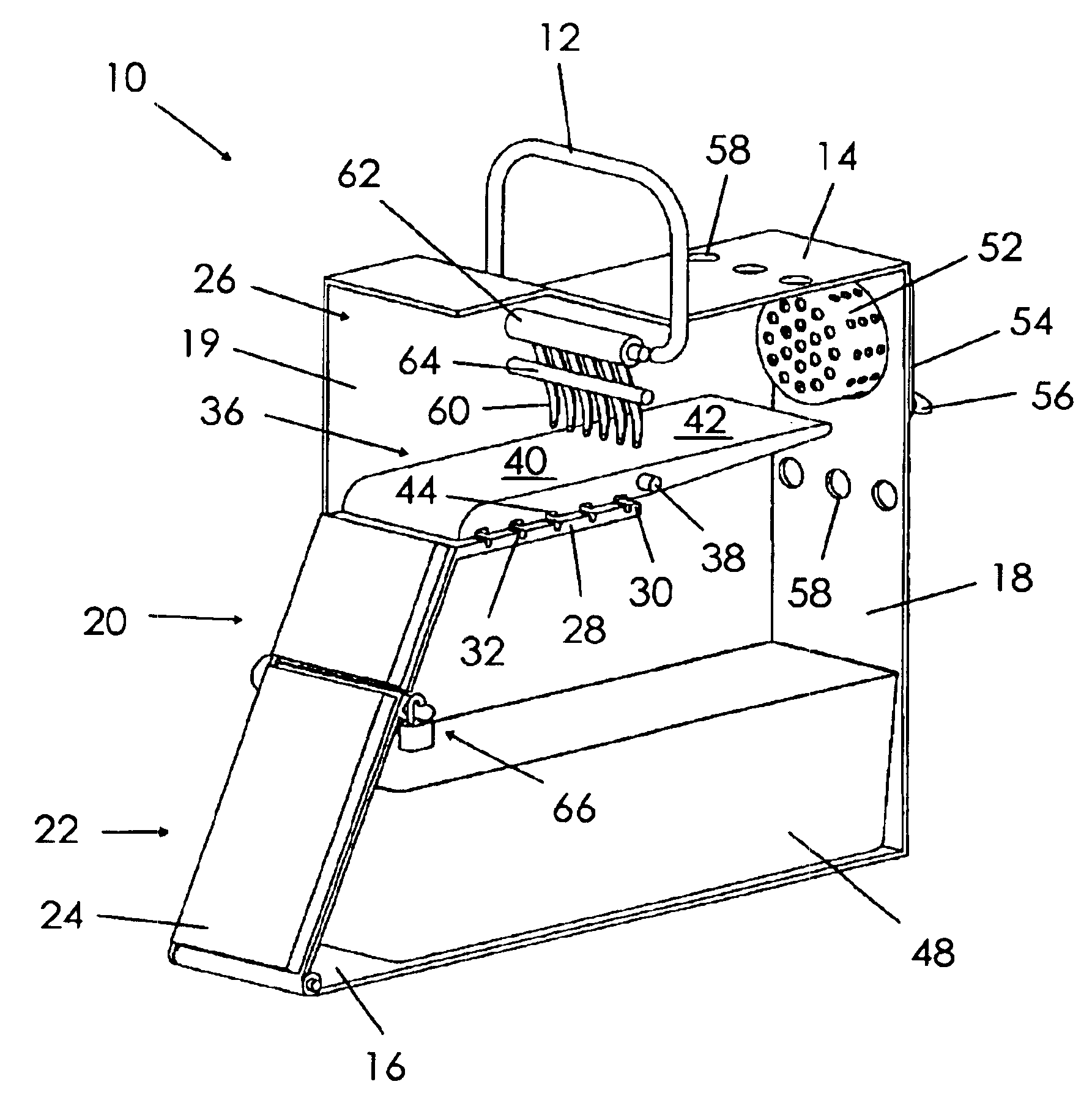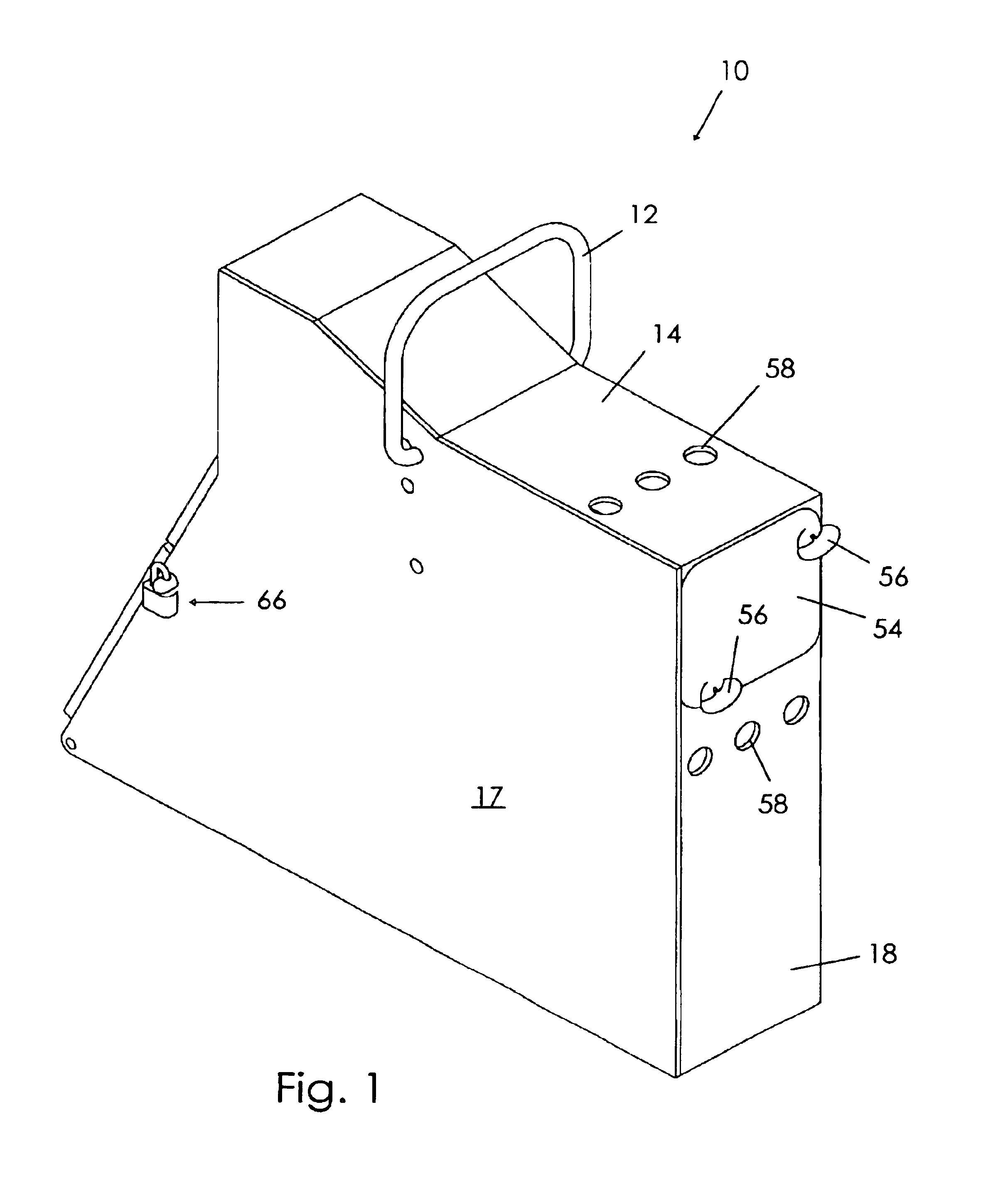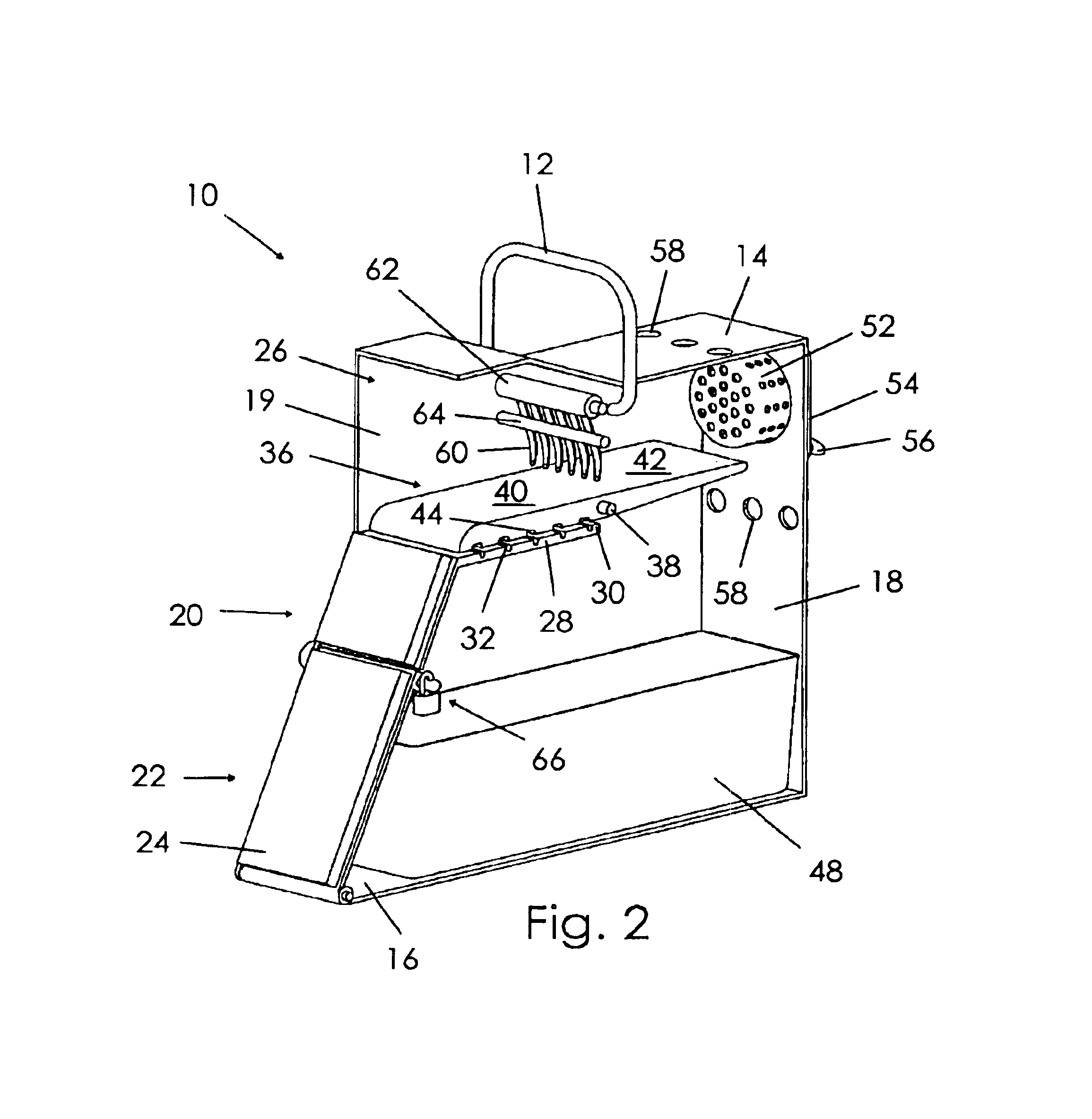Weight adjustable rodent trap
a rodent trap and adjustable technology, applied in the field of rodent traps, can solve the problems of inability to adjust the device for trapping rodents of various weights, inability to successfully inhibit rodents from learning to avoid the trap or inhibiting other rodents from being trapped, and the rodent eventually learns how to trap
- Summary
- Abstract
- Description
- Claims
- Application Information
AI Technical Summary
Benefits of technology
Problems solved by technology
Method used
Image
Examples
Embodiment Construction
[0024]A weight adjustable rodent trap 10 according to a preferred embodiment of the present invention will now be described in detail with reference to FIGS. 1 through 5b of the accompanying drawings. The rodent trap 10 includes a housing having a generally upstanding box-shaped configuration (FIG. 1) although other configurations utilizing the yet to be described features would also be suitable. More particularly, the housing includes top 14 and bottom 16 walls with front 17 and back 19 walls extending therebetween so as to substantially enclose the housing and define an interior space. The front wall 17 is preferably constructed of a transparent material to enable a user to view the interior space. A handle 12 may be mounted atop the top wall 14 for carrying the rodent trap 10 (FIG. 1).
[0025]Further, a ramp 20 acts as one side wall and extends substantially between the top 14 and bottom 16 walls at an oblique angle such that rodents may ascend the ramp 20 (FIG. 2). The ramp 20 is ...
PUM
 Login to View More
Login to View More Abstract
Description
Claims
Application Information
 Login to View More
Login to View More - R&D
- Intellectual Property
- Life Sciences
- Materials
- Tech Scout
- Unparalleled Data Quality
- Higher Quality Content
- 60% Fewer Hallucinations
Browse by: Latest US Patents, China's latest patents, Technical Efficacy Thesaurus, Application Domain, Technology Topic, Popular Technical Reports.
© 2025 PatSnap. All rights reserved.Legal|Privacy policy|Modern Slavery Act Transparency Statement|Sitemap|About US| Contact US: help@patsnap.com



